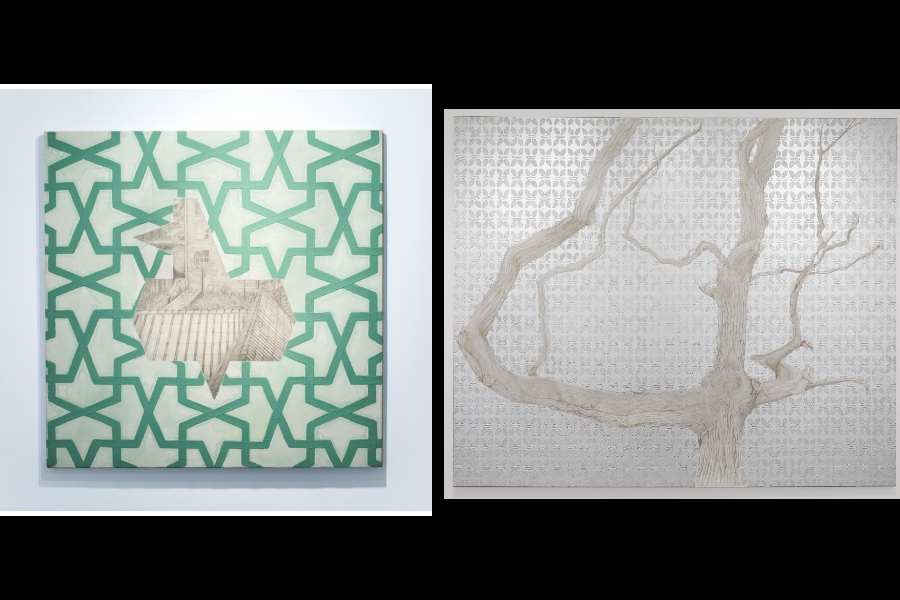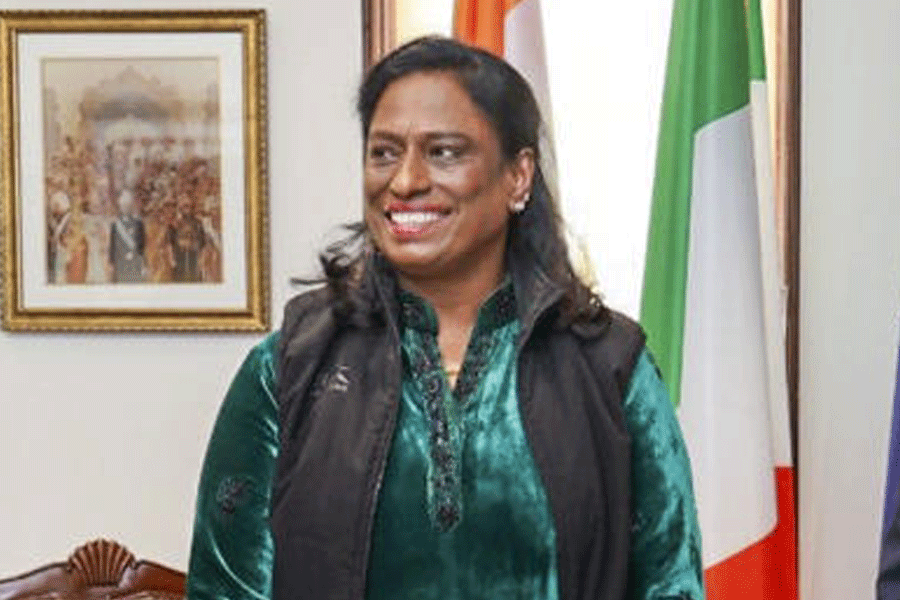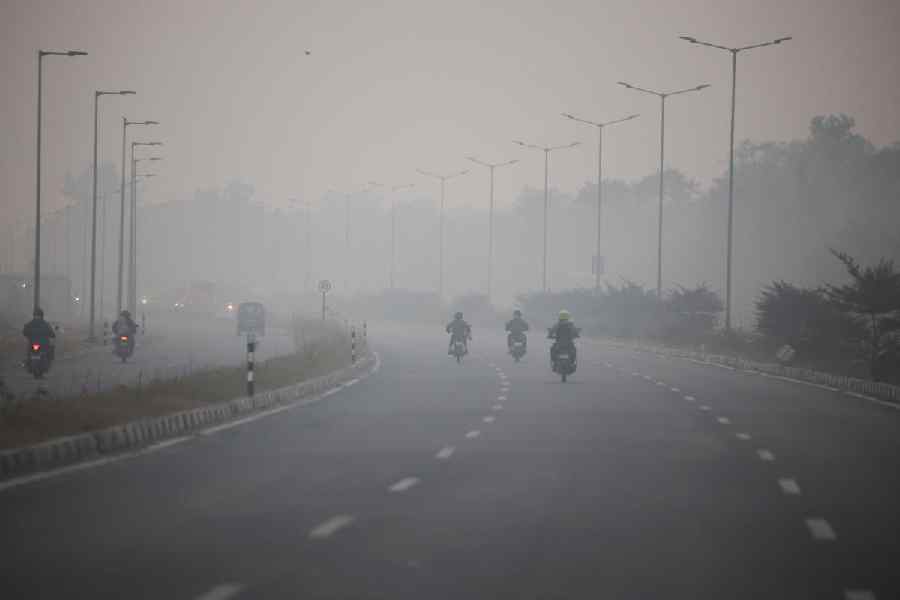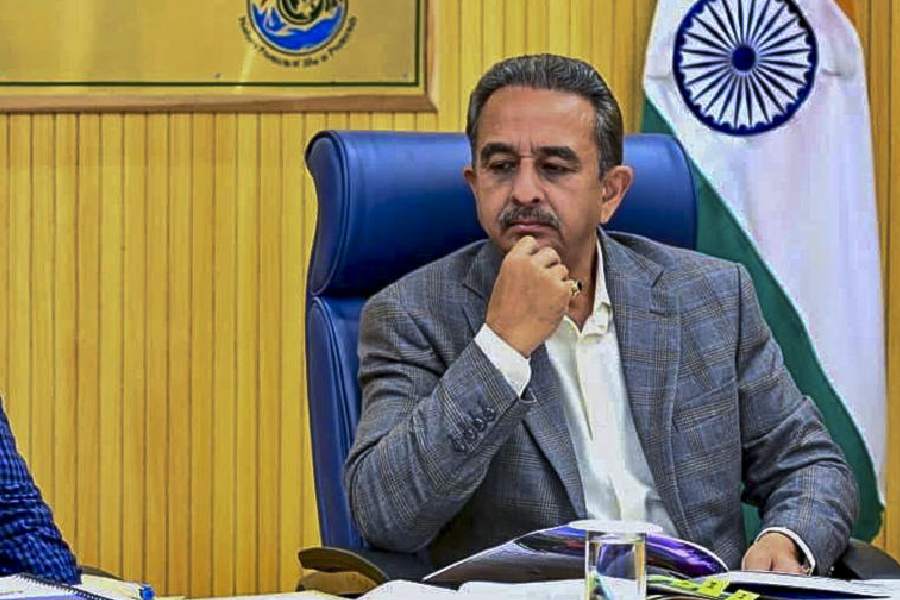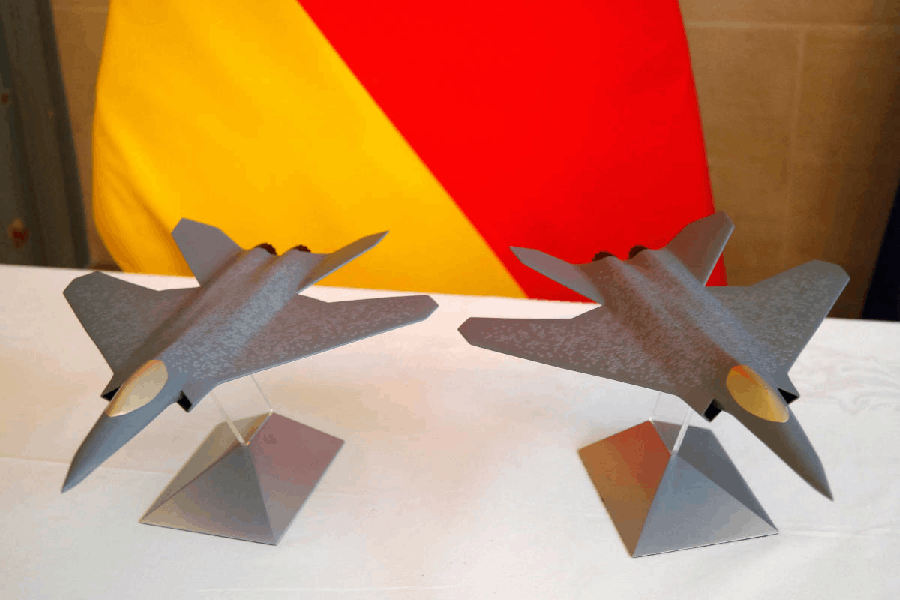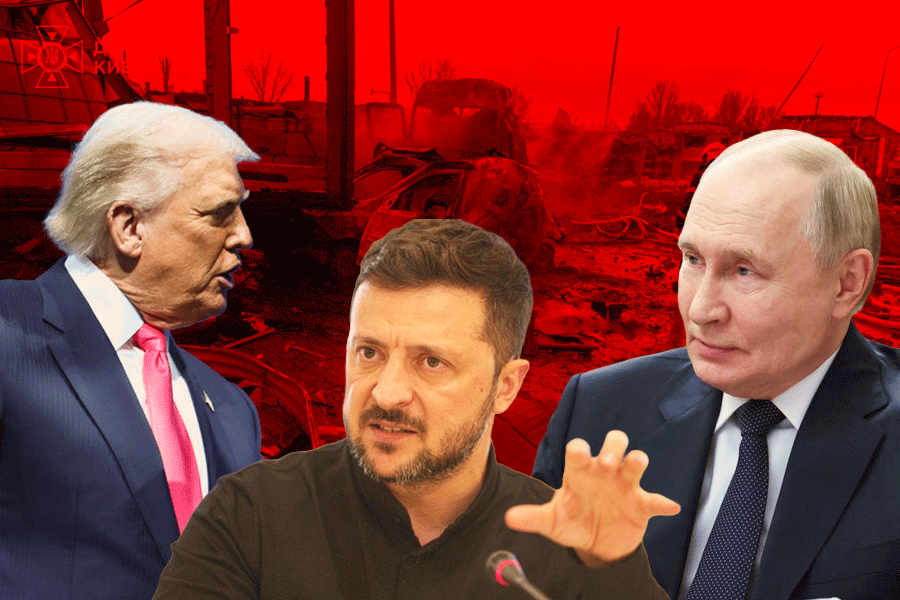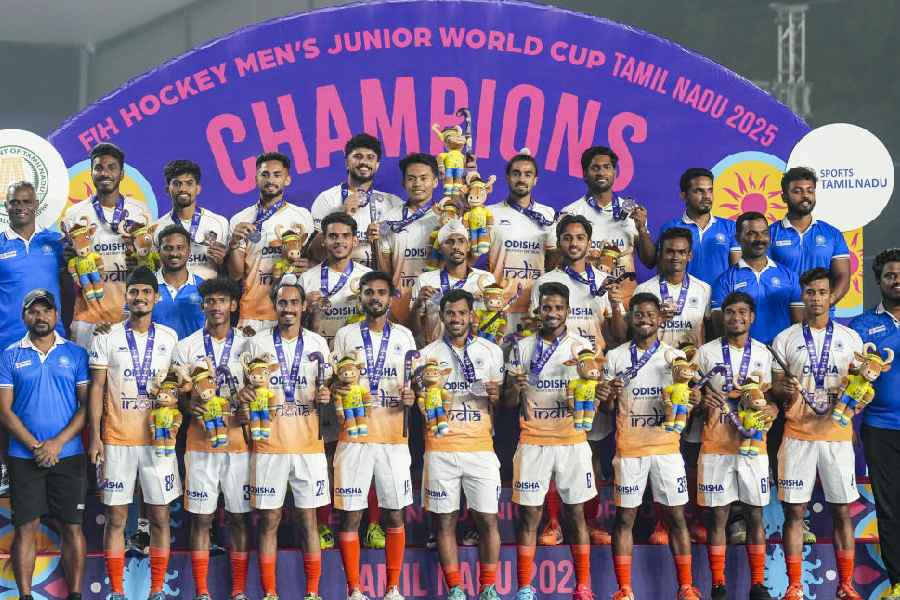In Islamic architecture, the mashrabiya, a latticed screen, allowed light and air to filter into a space while shielding those inside from the gaze of the street. It was thus both window and veil. Praneet Soi turned this duality into a metaphor at his recent exhibition, Mashrabiya, at Experimenter-Hindustan Road.
The exhibition unfolds with quiet precision. The Spring series, painted on papier-mâché surfaces alive with Kashmiri floral motifs, evokes the Valley’s ornamental vocabulary — each curve and petal carrying centuries of labour and repetition. Nearby, the Bird series reimagines the latticework itself as fantastical anatomy — fragile, half-creature, half-memory (picture, left). Soi’s craftsmanship — informed by his time in Srinagar with papier-mâché artisans and in Guangzhou with porcelain artists — is a meditation on how form migrates and how techniques adapt to new climates of meaning.
The centrepiece, Overlapping Landscapes or Bone (picture, right), places an oak tree drawn in silverpoint against a relief inspired by a 600-year-old Kashmiri tile. The tree, rendered with the unerring delicacy of a Renaissance draughtsman, gleams with a metallic restraint. The tile beneath it carries the trace of an older language, a hybrid of Buddhist, Hindu and Islamic motifs. Soi’s approach recalls the observational stillness of Mona Hatoum or the intricate mapping of Zarina Hashmi. Like them, Soi works through fragments — cuttings, imprints, residues. The effect is one of contemplative distance and a rejection of spectacle.
What distinguishes Mashrabiya is its resistance to finality. The exhibition does not claim resolution; it stages a series of negotiations — between intimacy and estrangement, between the craft of the artisan and the abstraction of the artist. The mashrabiya itself, once a structure of separation, becomes here a site of contact. Light and stories slip through its perforations. Walking through the show, there is a sense that each work is less an image than an aperture. Through them, one glimpses a network of overlapping influences and relationships — Kashmir, Guangzhou, Amsterdam, Calcutta — each filtering into the other. Within Soi’s deliberate practice, the mashrabiya transforms from a barrier into a medium of dialogue.

